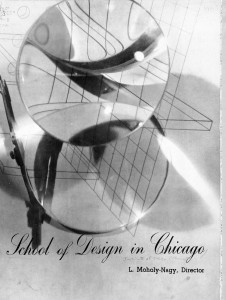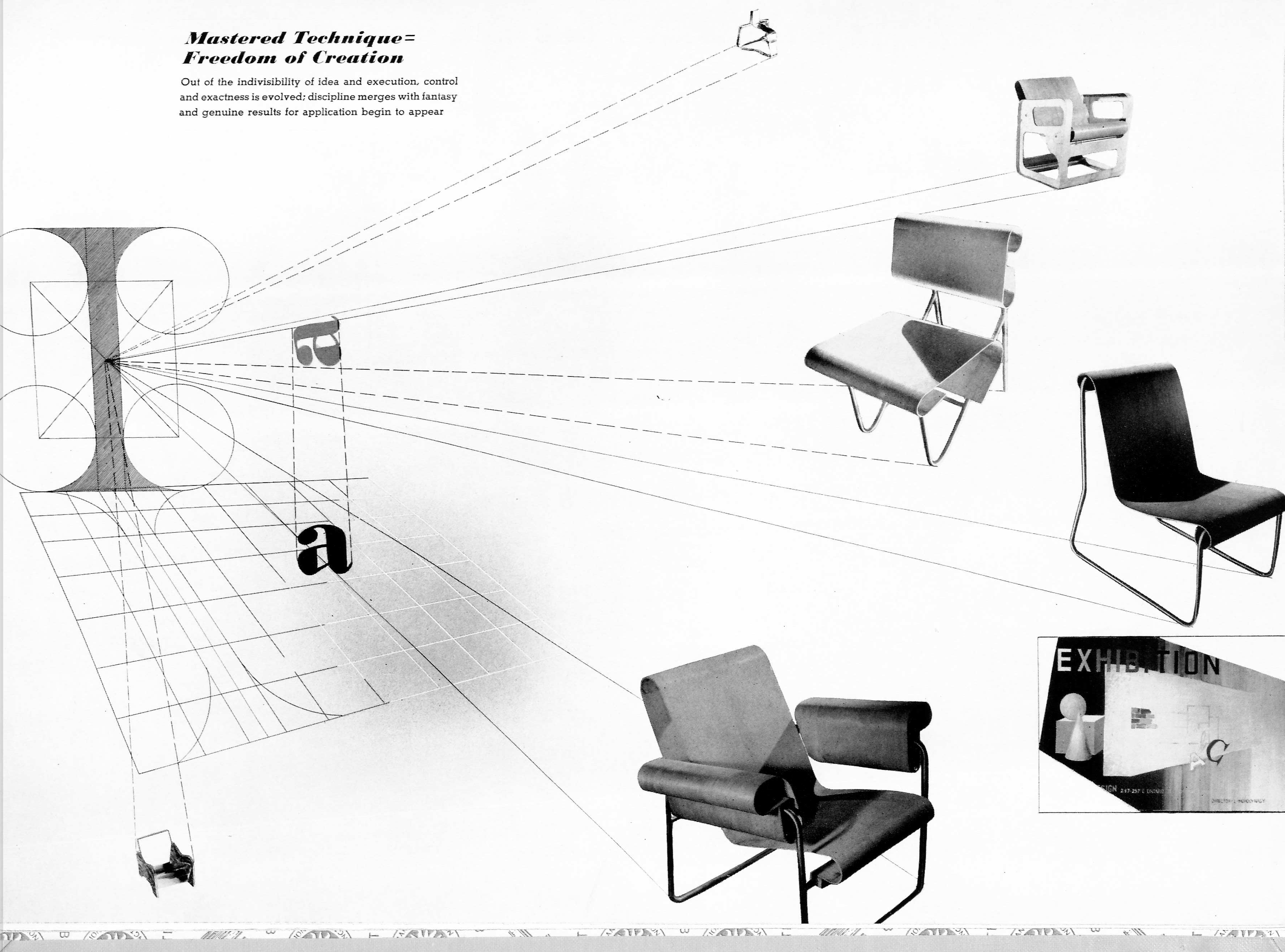This rare catalog details the curriculum, philosophy, faculty, and objectives of the School of Design in Chicago in the early 1940s. It is essentially a promotional guide geared to perspective students. The New Bauhaus, as the institution was called, was created as an industrial design school by Hungarian born Bauhaus masters László Moholy-Nagy (1895-1946) and György Kepes (1906-2001) in 1937. Under their direction, the school mirrored, for the most part, the theories and curriculum for design and arts education established at the Bauhaus in Germany in the 1920s and 1930s. At the New Bauhaus, Moholy-Nagy’s goal was to have students explore their creative potential through the study and experimentation of materials, techniques, and forms with a special focus on natural and human sciences. Workshops employed more sophisticated mechanical techniques in the study of photographic processes, work with wood, metal and plastics, and color, painting and decorating methods than had been used at their earlier counterpart in Germany.  One of the great achievements at the Chicago school was the study of photography under the direction of Kepes who ran the Color and Light Department. The cover and in the 2nd half of this catalog, features dramatic examples of avant-garde layouts using photography, photograms, drawings, and photocollage. The school, with its innovative goals, curriculum, and world-class faculty, however, suffered for many years from insufficient enrollment and funding. Mology-Nagy remained director until his death in 1946. The New Bauhaus was renamed the Institute of Design in 1944 and later merged with Illinois Institute of Technology in 1949.
One of the great achievements at the Chicago school was the study of photography under the direction of Kepes who ran the Color and Light Department. The cover and in the 2nd half of this catalog, features dramatic examples of avant-garde layouts using photography, photograms, drawings, and photocollage. The school, with its innovative goals, curriculum, and world-class faculty, however, suffered for many years from insufficient enrollment and funding. Mology-Nagy remained director until his death in 1946. The New Bauhaus was renamed the Institute of Design in 1944 and later merged with Illinois Institute of Technology in 1949.
The New Bauhaus
